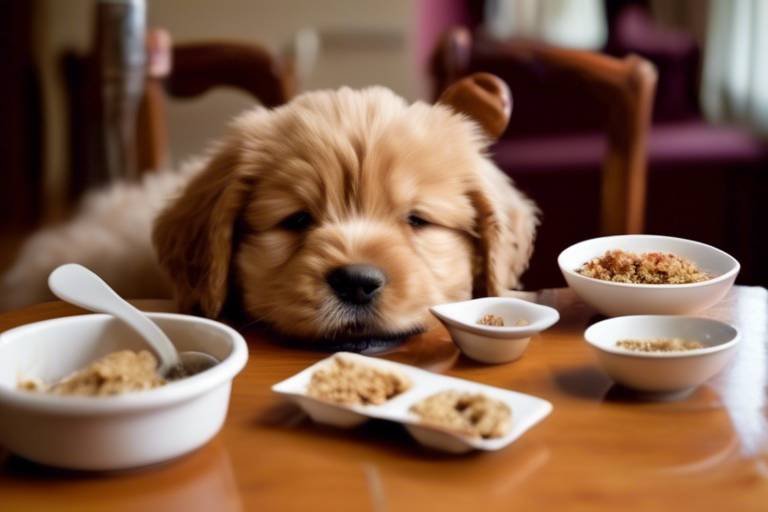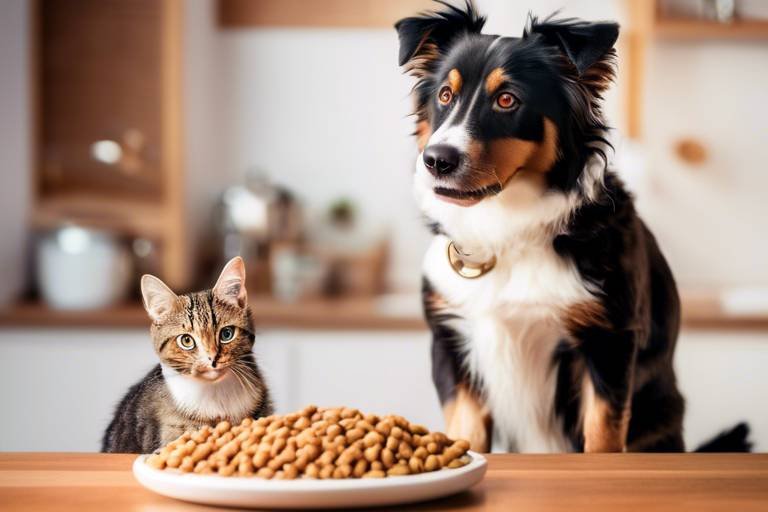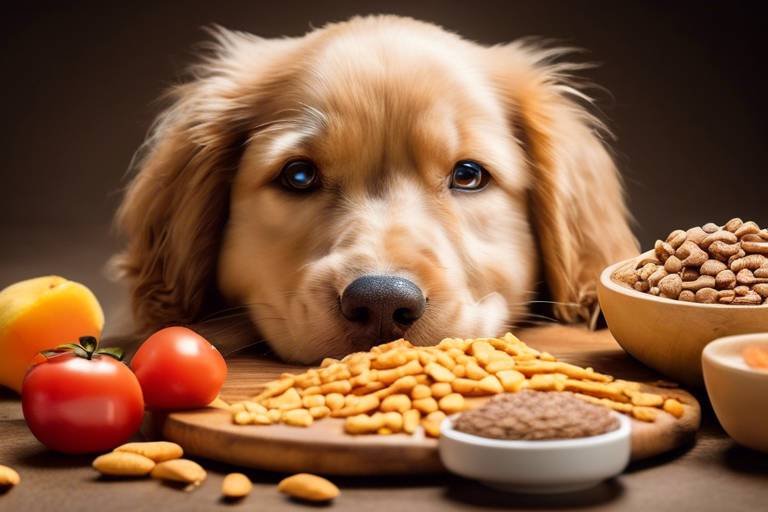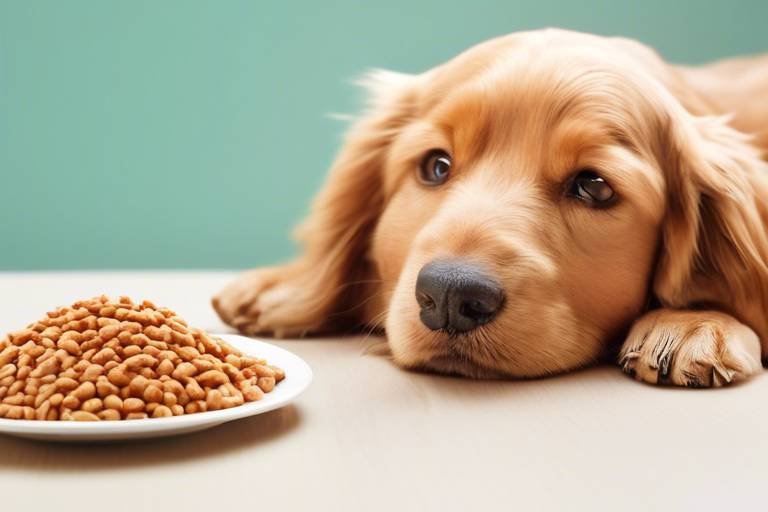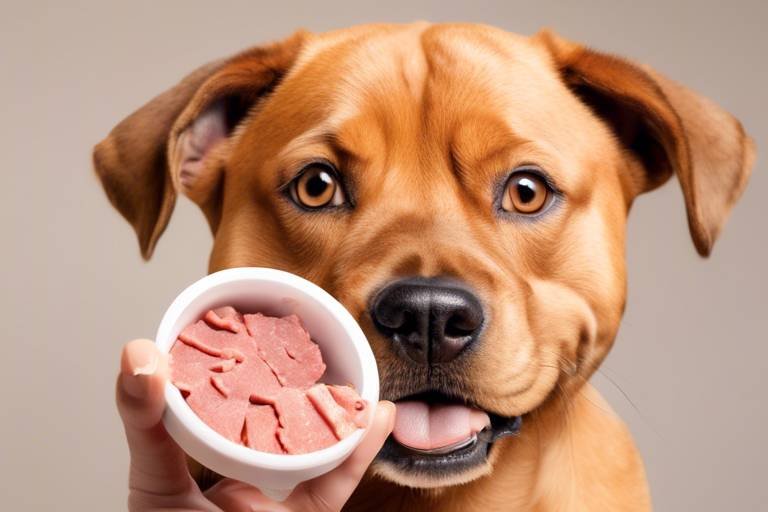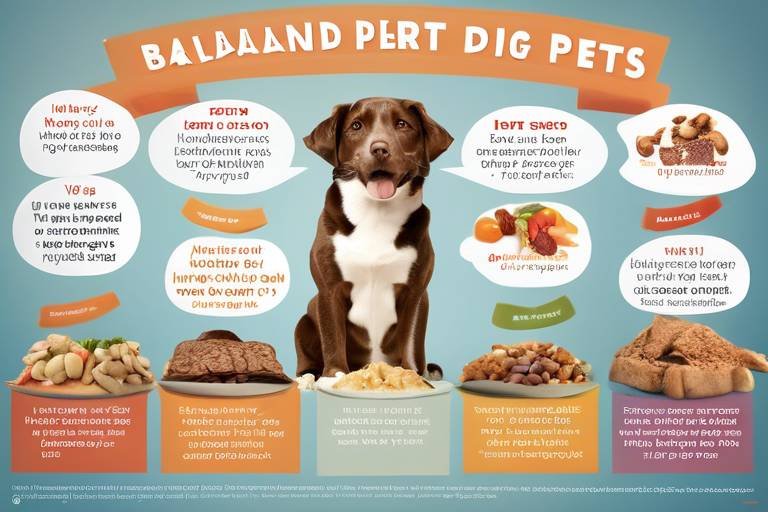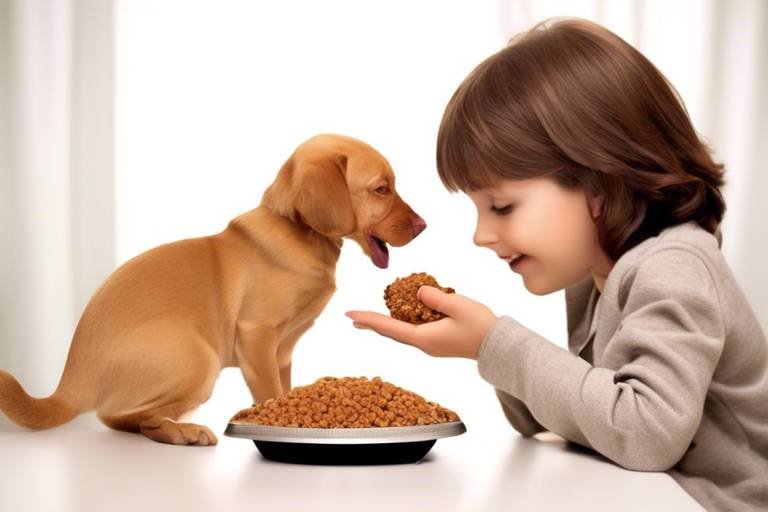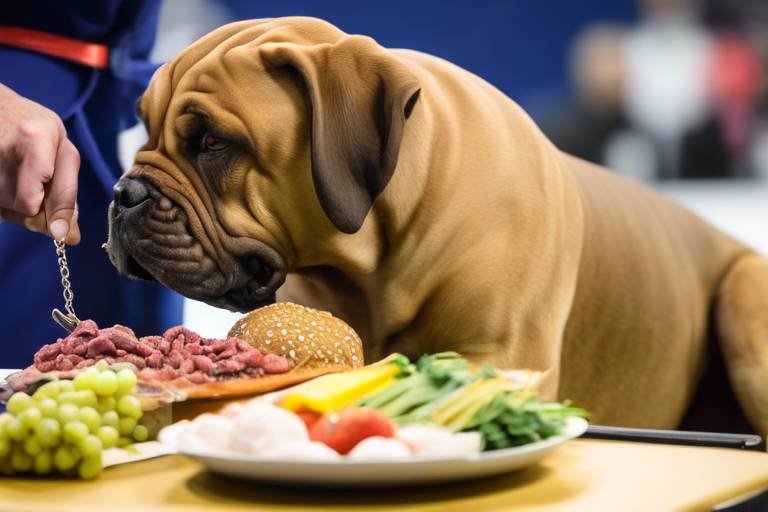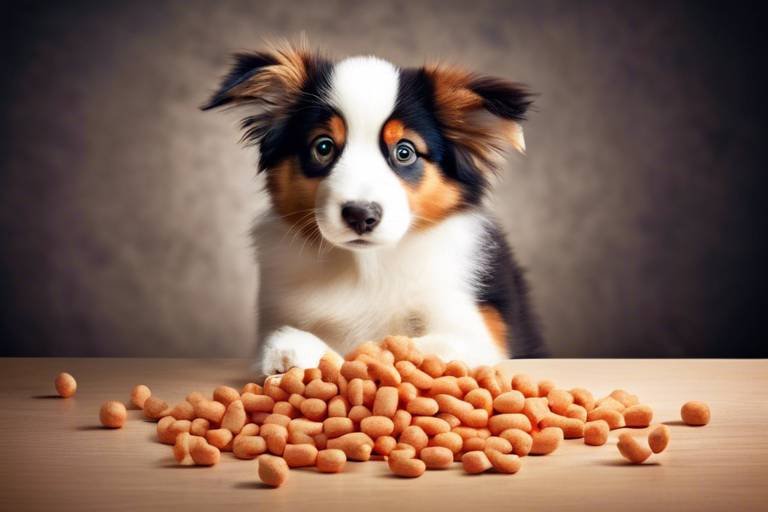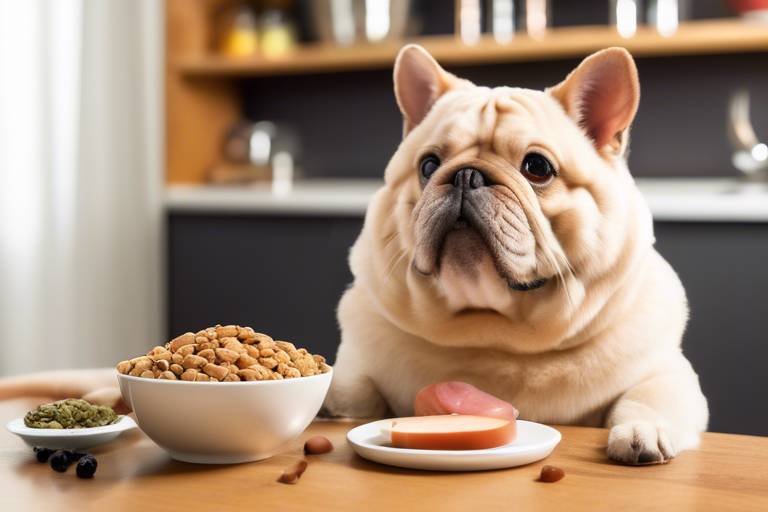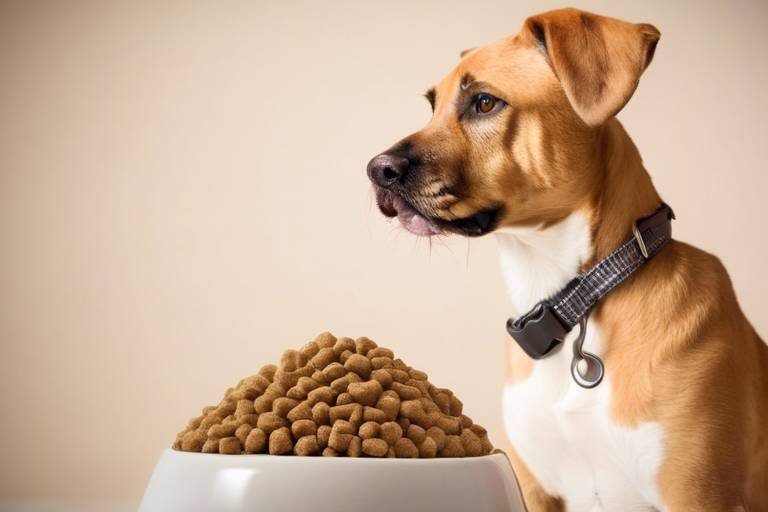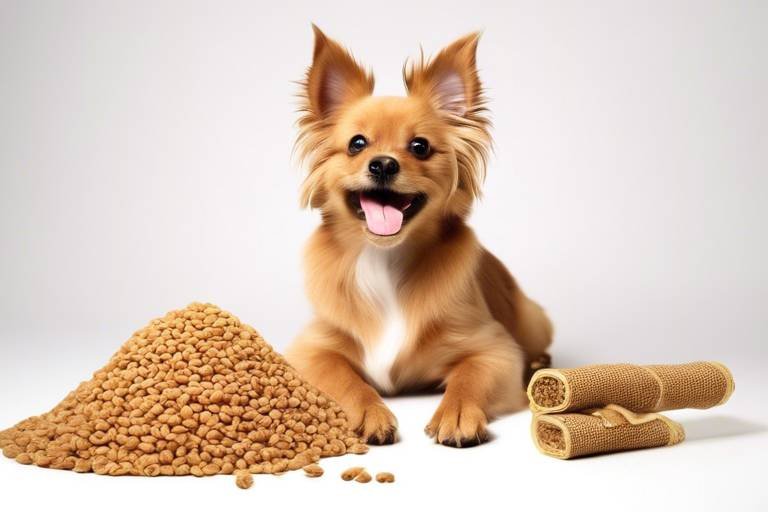The Risks of Feeding Pets Table Scraps
As pet owners, we often find ourselves looking into those big, pleading eyes, and it's hard not to give in when they beg for a taste of our dinner. However, feeding your furry friends table scraps can lead to a myriad of potential dangers that many pet owners might not be aware of. While it may seem harmless to share a bite of your food, the reality is that human diets are not designed with our pets in mind. This article delves into the potential health issues, behavioral problems, and alternative feeding practices that every pet owner should consider to ensure their beloved companions live healthy, happy lives.
To understand the risks associated with feeding pets table scraps, it's essential to first grasp the basics of pet nutrition. Just like humans, pets have specific nutritional needs that are vital for their overall health and well-being. Dogs and cats require a balanced diet that includes proteins, fats, carbohydrates, vitamins, and minerals. Unfortunately, table scraps often lack these essential nutrients and can lead to nutritional imbalances. For instance, while a slice of pizza might seem like a tasty treat, it is loaded with fats and sodium, which can be detrimental to your pet's health. Instead, consider providing your furry friend with high-quality pet food that meets their dietary requirements.
Feeding pets table scraps can lead to a range of health problems that can significantly affect their quality of life. Some of the most common health risks associated with inappropriate food choices include:
- Obesity: A significant concern for many pets, obesity can lead to serious health issues.
- Pancreatitis: This painful condition can arise from high-fat foods.
- Gastrointestinal Issues: Sudden dietary changes can cause upset stomachs, diarrhea, and vomiting.
Obesity is more than just a cosmetic concern; it poses serious health risks for pets. When pets consume table scraps, they often consume more calories than they need, leading to weight gain. Over time, this extra weight can lead to a host of health problems, including diabetes, heart disease, and joint issues. It's essential to recognize that a few extra pounds can have long-term implications for your pet's health.
Recognizing the signs of obesity is crucial for pet owners. A simple way to assess your pet's weight is to look for the following indicators:
- Difficulty feeling the ribs when you gently press your hands against their side.
- Excess fat covering the spine and tail base.
- A noticeable lack of a defined waist when viewed from above.
Regular weight assessments and veterinary check-ups can help keep your pet's weight in check and ensure they remain healthy.
Preventive measures are vital for maintaining a healthy weight in your pets. Here are some tips to avoid obesity:
- Stick to a consistent feeding schedule.
- Limit treats and avoid table scraps.
- Incorporate regular exercise into your pet's daily routine.
Sudden dietary changes can wreak havoc on a pet's digestive system. When pets consume human food, especially those rich in fats or spices, it can lead to gastrointestinal problems like diarrhea and vomiting. These issues can be uncomfortable for your pet and may require veterinary attention. It's essential to transition your pet to new foods gradually and stick to a diet tailored to their needs.
Feeding pets table scraps can also lead to undesirable behavioral issues. Inconsistent feeding practices can create confusion and lead to behaviors such as begging, which can be frustrating for pet owners. When pets learn that begging yields results, they may continue this behavior, making mealtime a challenge for everyone involved.
Begging for food is a common behavior in pets, and it often escalates when they are regularly fed table scraps. This behavior can lead to food aggression, where pets become possessive of their food, potentially leading to conflicts with other pets or even humans. To curb this behavior, it's essential to establish clear boundaries and stick to a regular feeding schedule.
Inconsistent feeding practices can complicate training efforts. When pets are given table scraps, they may become confused about what is acceptable behavior. This confusion can undermine obedience training and lead to frustration for both the pet and the owner. Consistency is key; by sticking to a structured feeding routine, you can help your pet understand what is expected of them.
Q: Can I give my pet any human food?
A: Not all human food is safe for pets. Foods like chocolate, grapes, and onions are toxic to pets. Always consult your veterinarian before introducing new foods.
Q: What should I do if my pet is overweight?
A: Consult your veterinarian for a tailored weight loss plan that includes a balanced diet and exercise.
Q: Are there any safe treats I can give my pet?
A: Yes! Many fruits and vegetables are safe for pets, such as carrots and apple slices (without seeds). Always research before giving new treats.
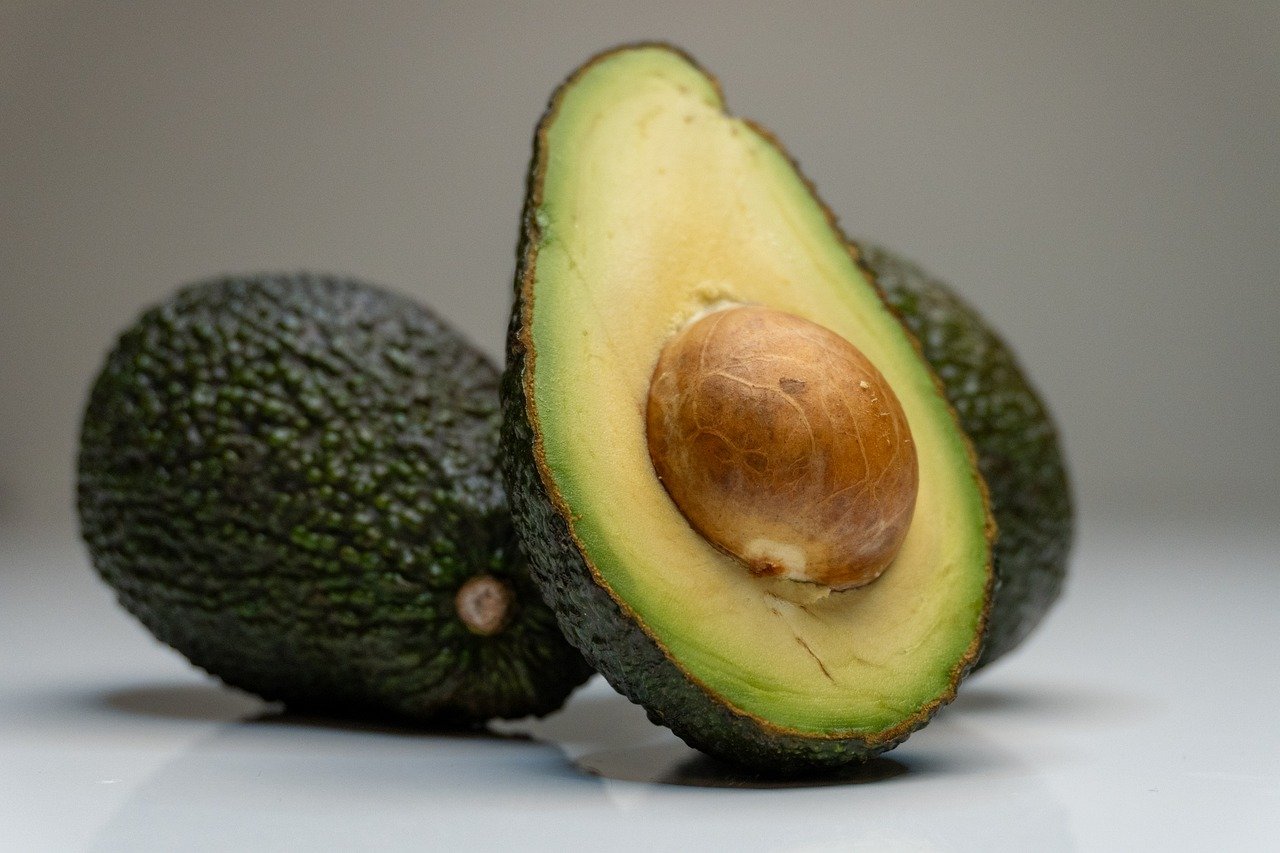
Understanding Pet Nutrition
When it comes to our furry friends, understanding pet nutrition is crucial. Just like humans, pets have specific dietary needs that must be met to ensure they stay healthy and happy. Unfortunately, many pet owners often overlook these needs, especially when it comes to sharing their meals. While it might seem harmless to toss a few table scraps their way, it can lead to serious nutritional deficiencies and health issues.
Pets require a balanced diet that consists of proteins, carbohydrates, fats, vitamins, and minerals. Each of these nutrients plays a vital role in their overall health. For instance, proteins are essential for building and repairing tissues, while carbohydrates provide energy for daily activities. Fats are also important, as they help maintain healthy skin and a shiny coat. However, the proportion of these nutrients varies between different species and breeds of pets. For example, dogs are omnivores and can thrive on a mixed diet, while cats are obligate carnivores, meaning they need a higher protein intake to survive.
Feeding pets table scraps can disrupt this delicate balance. Many human foods are high in fats and sugars, which may not only fail to meet a pet's nutritional requirements but can also lead to health complications. For instance, a diet high in carbohydrates can lead to obesity, while excessive fats can trigger pancreatitis, a painful inflammation of the pancreas.
Moreover, some human foods are downright toxic to pets. Foods like chocolate, grapes, onions, and garlic can cause severe health issues, from gastrointestinal distress to organ failure. It’s essential for pet owners to be aware of these dangers and ensure that their pets are fed a diet specifically formulated for their needs. This is where commercial pet foods come into play. These products are designed to meet the nutritional requirements of pets, providing a balanced diet that is safe and healthy.
In conclusion, understanding pet nutrition is not just about what to feed your pets but also about what not to feed them. Making informed decisions about their diet can prevent a host of health problems down the road. If you’re ever in doubt about what’s best for your pet, consulting with a veterinarian can provide personalized advice tailored to your pet’s specific needs.
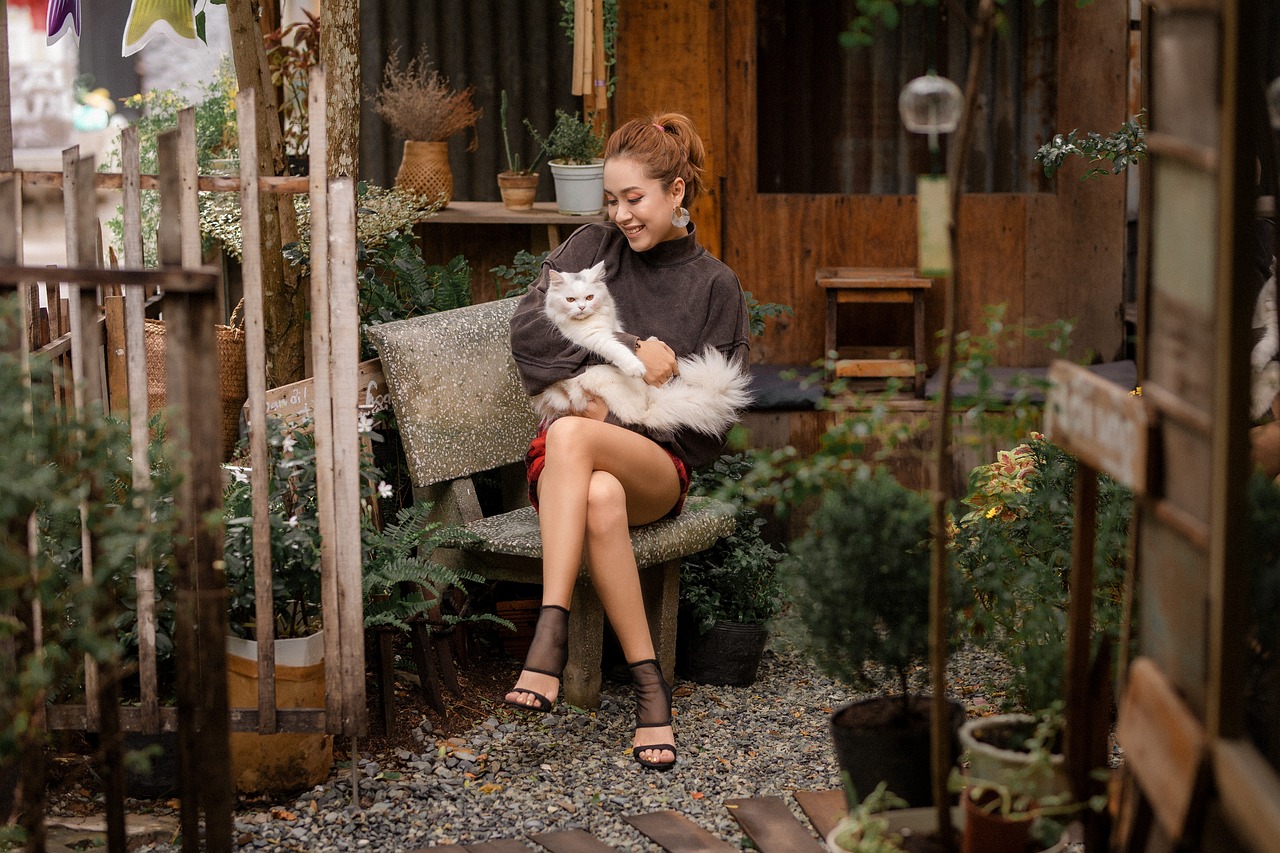
Common Health Risks
Feeding your furry friends table scraps might seem harmless, but it can open a Pandora's box of health issues that can leave you and your pet in a tough spot. Many pet owners don’t realize that what might be a delicious leftover for us could be a ticking time bomb for our pets. Obesity, pancreatitis, and various gastrointestinal issues are just a few of the potential health risks that can arise from inappropriate food choices. Let's dive deeper into these concerns to understand why it's essential to think twice before sharing your dinner plate.
First, let’s talk about obesity. It’s no secret that our pets love food, and when they get a taste of our meals, they often want more. The problem is that table scraps are typically high in calories and low in nutritional value. Over time, this can lead to significant weight gain. In fact, overweight pets are at a higher risk for serious health problems such as diabetes, heart disease, and joint issues. A study showed that more than 50% of dogs and cats in the United States are considered overweight or obese. That’s a staggering number!
But how do you know if your pet is tipping the scales? Recognizing the signs of obesity is crucial. If your pet has a hard time getting up, seems lethargic, or if you can’t easily feel their ribs when you pet them, these could be red flags. Regular weight assessments are vital, and if you notice your pet gaining weight, it’s time to rethink their diet.
Now, let’s not forget about gastrointestinal issues. When you suddenly switch your pet’s diet to include human food, it can wreak havoc on their digestive system. Pets are creatures of habit, and a drastic change in diet can lead to complications like diarrhea, vomiting, and even more severe conditions. Imagine if you suddenly switched from a balanced diet to only eating pizza—your stomach would definitely protest! The same goes for your pets. Their systems aren’t designed to handle the richness and variety of our food, which can lead to serious digestive distress.
Furthermore, pancreatitis is another serious condition that can arise from feeding pets table scraps, especially those high in fat. This inflammation of the pancreas can cause severe abdominal pain and can be life-threatening if not treated promptly. Symptoms include vomiting, lethargy, and a reluctance to eat. If you notice these signs, it’s essential to consult your veterinarian immediately.
In conclusion, while it might be tempting to share your food with your pets, the risks far outweigh the benefits. Instead, consider providing them with a balanced diet that meets their nutritional needs. This approach not only keeps them healthy but also ensures they live a longer, happier life. Remember, our pets rely on us to make the best choices for their wellbeing, so let’s not let our love for them lead to unhealthy habits!
- Can I give my pet table scraps occasionally? - While an occasional small bite may not harm them, it's crucial to ensure that what you're giving is safe and healthy for pets.
- What are some safe treats for pets? - Consider fruits like apples or carrots, or store-bought treats specifically designed for their dietary needs.
- How can I transition my pet to a new diet? - Gradually mix the new food with their current food over a week to avoid gastrointestinal upset.
Obesity in Pets
Obesity is not just a cosmetic concern for our furry friends; it is a serious health issue that can lead to a multitude of problems. Imagine your pet as a balloon that keeps getting inflated. At first, it might seem harmless, but as it expands, it becomes more susceptible to popping! In the world of pets, this "popping" translates to health complications that can drastically affect their quality of life. When we feed our pets table scraps, we often overlook the hidden calories and unhealthy ingredients that contribute to weight gain. It's important to understand that pets have specific dietary needs, and human food can disrupt their nutritional balance.
One of the primary ways table scraps contribute to obesity is through excess calorie intake. Many pet owners may not realize how quickly those little treats add up. For instance, a small piece of leftover pizza may seem insignificant, but it could contain more calories than your pet needs in a day! This is particularly true for pets that are already sedentary or have lower energy requirements. Over time, these extra calories can lead to an overweight pet, which can bring about a host of long-term health implications.
Research shows that obesity in pets can lead to serious conditions such as:
- Diabetes
- Joint problems
- Heart disease
- Reduced lifespan
To put it simply, an overweight pet is an unhappy pet. They may struggle with basic activities like playing or even walking, which can lead to a vicious cycle of inactivity and further weight gain. It's vital to recognize that obesity is not just about how a pet looks; it's about how they feel and function in their daily lives. Regular exercise and a balanced diet tailored to their specific needs are crucial in preventing obesity.
As a pet owner, you play a pivotal role in your pet's health. By being mindful of what you feed them and understanding the risks associated with table scraps, you can help ensure that your furry friend remains healthy and active. So next time you’re tempted to share your leftovers, think twice! Your pet will thank you for it in the long run.
Identifying Obesity
Recognizing obesity in pets is crucial for their overall health and well-being. Just like humans, pets can suffer from the consequences of carrying excess weight, and identifying this condition early can make a significant difference in their quality of life. So, how can you tell if your furry friend is tipping the scales? There are several key indicators to look out for.
First and foremost, you should observe your pet's body shape. Ideally, when viewed from above, your pet should have a noticeable waistline that narrows between the ribs and hips. If your pet appears more rounded or has no defined waist, this could be a sign of weight gain. Additionally, when you run your hands along your pet's sides, you should be able to feel their ribs without excessive pressure. If you can't feel them at all or they feel like they are buried under a layer of fat, it’s time to take action.
Another important factor to consider is your pet's activity level. Are they still as playful and energetic as they used to be? A sudden decline in activity can indicate weight-related issues. Pets that are overweight often become lethargic and may struggle with simple activities like walking or playing. This can lead to a cycle of inactivity and further weight gain, making it even more critical to address the issue promptly.
Regular weight assessments are essential in identifying obesity. It's a good practice to weigh your pet at least once a month. Many pet owners underestimate how much their pets weigh, so using a scale designed for pets can provide accurate readings. If you notice a gradual increase in weight over time, it may be time to consult with your veterinarian for advice on a proper diet and exercise plan.
In summary, being vigilant about your pet’s weight involves a combination of visual assessment, touch, and regular weigh-ins. By keeping an eye out for these signs, you can help ensure your pet remains healthy, active, and happy. Remember, a proactive approach to pet health can prevent serious issues down the road!
- What is the ideal weight for my pet? The ideal weight varies by breed, age, and size. Consult with your veterinarian for personalized recommendations.
- How can I help my pet lose weight? Gradually adjust their diet, increase exercise, and consider portion control. Always consult your vet before making significant changes.
- Are there specific foods I should avoid? Yes, foods high in fat and sugar, as well as table scraps, should be avoided to prevent weight gain.
Preventing Obesity
Preventing obesity in pets is not just about avoiding table scraps; it's about creating a holistic approach to their health and well-being. Just like us, our furry friends thrive on a balanced diet and regular exercise. The first step in this journey is to establish a consistent feeding schedule. By feeding your pet at the same times every day, you can help regulate their metabolism and prevent overeating. It’s essential to measure their food portions accurately, as many pet owners unknowingly overfeed their pets, thinking they are being generous.
Moreover, choosing high-quality pet food that meets their nutritional needs is crucial. Look for products that are specifically formulated for your pet's age, weight, and activity level. Reading the labels can be overwhelming, but focusing on key ingredients and nutritional information can guide you in making informed choices. Remember, not all human food is safe or appropriate for pets. For example, while fruits and vegetables like carrots and apples can be healthy snacks, others like grapes and onions can be toxic.
Incorporating regular exercise into your pet's routine is equally important. Just like a couch potato will gain weight, a sedentary pet is at risk of obesity. Aim for at least 30 minutes of physical activity each day, which can include walks, playtime, or even training exercises. This not only helps maintain a healthy weight but also strengthens the bond between you and your pet. Engaging in activities together can be a fun way to keep both of you active!
Lastly, consider the role of treats in your pet's diet. While it's tempting to give treats frequently, moderation is key. Limit treats to no more than 10% of their daily caloric intake. Instead of high-calorie snacks, opt for healthier alternatives like small pieces of cooked chicken or low-calorie commercial treats. This way, you can reward your pet without tipping the scale in the wrong direction.
By staying vigilant about their diet and exercise, you can help your pet live a longer, healthier life. Remember, it's not just about preventing obesity; it's about ensuring your furry companion has the best quality of life possible!
- What are the signs of obesity in pets? Look for signs such as difficulty in walking, reluctance to play, and an inability to feel their ribs easily.
- How can I encourage my pet to exercise more? Try engaging in fun activities like fetch, agility training, or even doggy playdates to make exercise enjoyable.
- Are there specific foods I should avoid giving my pet? Yes, foods like chocolate, grapes, onions, and anything high in fat should be avoided as they can be harmful.
- How often should I take my pet to the vet? Regular check-ups at least once a year are recommended, but more frequent visits may be necessary for overweight pets.
Gastrointestinal Issues
Feeding your beloved furry friend table scraps may seem harmless, but it can lead to a host of that can cause discomfort and distress. Pets have sensitive digestive systems that are not designed to handle sudden changes in their diet, especially when it comes to rich or fatty human foods. Just like us, when pets consume something their stomachs aren't used to, it can lead to a cascade of problems. Imagine suddenly switching from a balanced meal to a greasy burger; your stomach would likely protest, right? Well, the same goes for our pets!
One of the most common issues is diarrhea. When pets eat table scraps that are high in fat or contain ingredients that their bodies can't process, it can upset their stomachs, leading to loose stools or even full-blown diarrhea. This not only causes discomfort for your pet but can also lead to dehydration, which is a serious concern. Additionally, vomiting is another frequent reaction. Pets may throw up as their bodies try to expel what they perceive as harmful food. This can be particularly alarming for pet owners, as seeing your pet in distress is never easy.
To help illustrate the potential risks, consider the following table that outlines some common gastrointestinal issues associated with feeding table scraps:
| Gastrointestinal Issue | Symptoms | Potential Causes |
|---|---|---|
| Diarrhea | Loose stools, frequent bathroom trips | Rich or fatty foods, sudden diet change |
| Vomiting | Regurgitation, nausea | Incompatible human food, overeating |
| Gas | Flatulence, bloating | High-fiber foods, dairy products |
Moreover, pets that frequently consume human food may develop a condition called pancreatitis. This is an inflammation of the pancreas that can occur when a pet's diet is high in fat. Symptoms of pancreatitis can include severe abdominal pain, lethargy, and loss of appetite. It’s crucial to understand that these issues can escalate quickly, leading to more severe health complications if not addressed promptly.
In conclusion, while it may be tempting to share your meals with your furry companions, it’s essential to consider the potential gastrointestinal issues that can arise from such practices. Instead of table scraps, think about providing your pet with a balanced diet that meets their nutritional needs. If you do want to treat them, consider healthier options specifically designed for pets, which can be both safe and enjoyable for them!
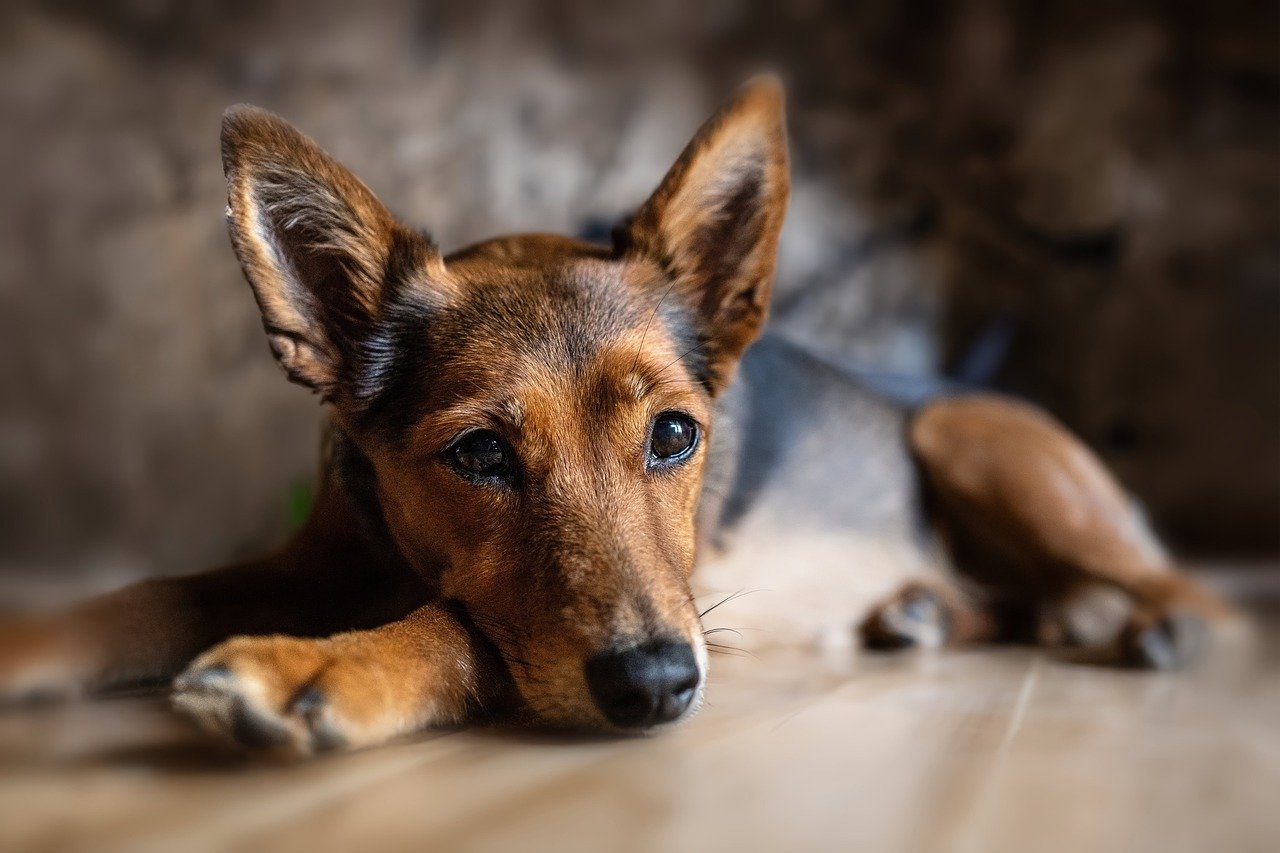
Behavioral Problems
Feeding your pets table scraps might seem like a harmless way to show love, but it can lead to a variety of behavioral issues that can be challenging for both you and your furry friends. Imagine this: every time you sit down to enjoy a meal, your pet is right there, eyes wide, tail wagging, and begging for just a taste. This behavior, while cute, can quickly escalate into a problem if not managed properly. When pets are regularly fed from the table, they learn to associate human food with reward, reinforcing the idea that begging is an effective way to get what they want.
One of the primary issues that arise from this habit is the development of begging behavior. This isn't just a one-time occurrence; it becomes a routine. Over time, your pet may start to beg not just during meal times, but at any time they think food might be available. This can be especially problematic during family gatherings or when guests are over, as it can lead to an uncomfortable atmosphere and distract from the enjoyment of the meal. Furthermore, if a pet is rewarded with food for begging, it solidifies this behavior, making it even harder to break the cycle.
In addition to begging, feeding pets table scraps can also lead to food aggression. When pets are used to competing for food, they may become possessive and defensive over their meals, leading to aggressive behaviors towards other pets or even humans. This can create a tense environment in your home, as you may find yourself having to intervene during meal times to prevent conflicts. The last thing you want is for your loving companion to feel the need to guard their food, which can lead to serious safety concerns.
Moreover, inconsistent feeding practices can complicate training efforts. When pets are fed human food sporadically, it creates confusion about what is acceptable to eat and what isn’t. This inconsistency can undermine your training efforts, making it difficult for your pet to understand commands or expected behaviors. For example, if your dog is used to getting scraps from the dinner table, they may not understand why they can't have the same food during training sessions. This confusion can lead to frustration for both you and your pet, making it essential to establish clear and consistent feeding rules.
To summarize, while it may seem like a small act of kindness to share your meal with your pet, the potential for is significant. It’s important to recognize the long-term implications of feeding table scraps and consider the effects it may have on your pet's behavior. By setting boundaries and sticking to a consistent feeding routine, you can help your furry companion develop healthy habits and maintain a happy, balanced demeanor.
- Can I ever give my pet table scraps? - While it's best to avoid regular table scraps, occasional small bites of safe foods can be fine. Always check if the food is pet-friendly.
- What are some safe alternatives to table scraps? - Consider using specially formulated pet treats or healthy fruits and vegetables that are safe for pets.
- How can I stop my pet from begging? - Consistency is key. Avoid feeding them from the table and provide them with their own meals at scheduled times.
- What should I do if my pet shows signs of food aggression? - Consult a veterinarian or a professional dog trainer for guidance on how to manage and correct this behavior.
Begging and Food Aggression
Have you ever sat down to enjoy a meal, only to be met with those big, pleading eyes from your furry friend? It’s hard to resist giving in to such adorable antics, but did you know that feeding pets table scraps can actually reinforce begging behavior? When you share your food, even just a little bit, you send a message to your pet that begging works. Over time, this can lead to a cycle of demanding behavior that’s hard to break. Imagine a child who learns that throwing a tantrum gets them what they want; the same principle applies to our pets.
But it doesn’t stop at just begging. This behavior can escalate into something more serious—food aggression. Food aggression occurs when a pet becomes possessive over their food, which can lead to growling, snapping, or even biting if they feel their “treasure” is threatened. This is particularly concerning in multi-pet households, where competition for food can intensify these aggressive tendencies. It’s like a game of tug-of-war, where the prize is a bowl of kibble, but the stakes are much higher!
So, what can you do to prevent these issues from developing? One effective strategy is to establish clear feeding routines and stick to them. Instead of sharing your meal, consider allocating specific times for feeding your pets their own food. This not only helps in reducing begging but also teaches them to respect their meal times. Additionally, you can train your pets to stay in a designated spot while you eat, rewarding them for good behavior. This approach not only curbs their begging but also promotes a sense of discipline, making mealtime more enjoyable for everyone involved.
In summary, while it may seem harmless to share a bite or two from your plate, the long-term consequences can be significant. By understanding the impact of feeding table scraps, you can foster a healthier relationship with your pet and create a more peaceful home environment. Remember, a well-fed pet is a happy pet, and that doesn’t always mean sharing your dinner!
- Is it ever okay to give my pet table scraps? - Occasionally, small amounts of certain human foods can be safe for pets, but it's essential to know which foods are safe and to avoid making it a habit.
- What are some safe human foods I can share with my pet? - Foods like cooked chicken, carrots, and plain rice can be safe options, but always consult your vet before introducing new foods.
- How can I stop my dog from begging at the table? - Establish a routine, use commands, and reward them for staying calm during mealtime to discourage begging behavior.
- What signs indicate my pet is food aggressive? - Look for growling, snapping, or guarding their food bowl. If you notice these behaviors, consult a professional trainer or behaviorist.
Training Challenges
When it comes to training our furry friends, consistency is key. However, feeding pets table scraps can throw a wrench into this well-oiled machine. Imagine trying to teach your dog to sit, stay, or come, only to find that they are more interested in the remnants of last night's dinner than your commands. This inconsistency can lead to confusion, making it challenging for pets to understand what behaviors are acceptable. When you reward your pet with table scraps for begging or for simply being cute, you inadvertently reinforce behaviors that might not be desirable.
Moreover, the act of giving table scraps can create a mixed message. One moment, your pet is being rewarded for good behavior, and the next, they are being scolded for begging at the dinner table. This push-and-pull can lead to frustration not just for the pet, but for the owner as well. It's akin to trying to learn a new language where the rules change daily; it can be incredibly disorienting!
To further illustrate this point, let’s consider some specific training challenges that arise from feeding table scraps:
- Increased Begging Behavior: When pets learn that they can score a tasty treat from your plate, they may start to develop a habit of begging. This can escalate quickly, turning your meal times into a circus act where your pet is constantly vying for your attention.
- Food Aggression: If pets become accustomed to receiving food from the table, they may start to guard their food more aggressively, leading to conflicts with other pets or even family members.
- Confusion During Training: Pets thrive on routine and clear expectations. If you allow table scraps at certain times but not others, it can lead to confusion about when and where they can expect food rewards.
These challenges can make it difficult to establish a solid training foundation. Instead of focusing on commands and tricks, you may find yourself battling unwanted behaviors that have developed as a result of inconsistent feeding practices. So, what can you do to mitigate these issues? The answer lies in establishing a clear feeding routine that prioritizes your pet's nutritional needs over the occasional indulgence. By doing so, you not only promote better behavior but also create a more harmonious living environment.
Q: Can I ever give my pet table scraps?
A: While it's not advisable as a regular practice, small, healthy portions of certain human foods can be given occasionally as treats. Just ensure they don't disrupt your pet's nutritional balance.
Q: What are some safe human foods I can share with my pet?
A: Foods like carrots, green beans, and small pieces of cooked chicken or fish can be safe options. Always research and consult your veterinarian before introducing new foods.
Q: How can I stop my pet from begging at the table?
A: Establish a designated feeding area and stick to a routine. Ignore begging behavior and reward your pet only when they are calm and not seeking food.
Frequently Asked Questions
- Is it safe to feed my pet table scraps?
Feeding pets table scraps can pose significant health risks. Many human foods are not suitable for pets and can lead to issues like obesity, pancreatitis, and gastrointestinal problems. It's essential to understand your pet's nutritional needs and choose appropriate foods specifically designed for them.
- What are the common health risks associated with table scraps?
Common health risks include obesity, which can lead to a variety of long-term health issues, gastrointestinal problems such as diarrhea and vomiting, and even pancreatitis, which is a severe inflammation of the pancreas. These risks arise from inappropriate food choices that don't meet your pet's dietary requirements.
- How can I identify if my pet is obese?
Recognizing obesity in pets involves looking for certain signs such as difficulty in feeling their ribs, a noticeable lack of waist when viewed from above, and decreased energy levels. Regular weight assessments with your veterinarian can help monitor your pet's weight effectively.
- What steps can I take to prevent obesity in my pet?
Preventing obesity involves maintaining a balanced diet tailored to your pet's specific needs and ensuring regular exercise. Avoid feeding table scraps and stick to veterinarian-recommended pet food. Regularly engaging your pet in physical activities can also help keep their weight in check.
- Can table scraps cause behavioral problems in pets?
Yes, feeding table scraps can lead to behavioral issues like begging and food aggression. When pets receive food from the table, they may develop a habit of begging for more, which can create a challenging dynamic between you and your pet.
- How do I address begging behavior in my pet?
To combat begging, it's crucial to establish consistent feeding practices. Avoid giving in to your pet's begging by not feeding them from the table, and instead, provide designated meal times with their proper food. Training and positive reinforcement can also help reinforce good behavior.
- What are the best alternatives to table scraps?
The best alternatives to table scraps are high-quality pet foods that meet the specific nutritional needs of your pet. You can also consider healthy treats that are specifically formulated for pets. Always consult your veterinarian for recommendations on suitable diets for your furry friend.

